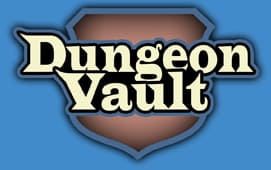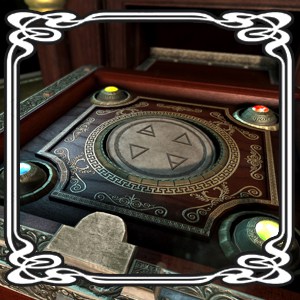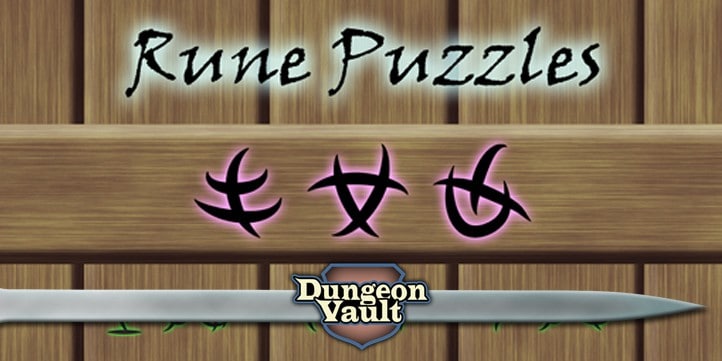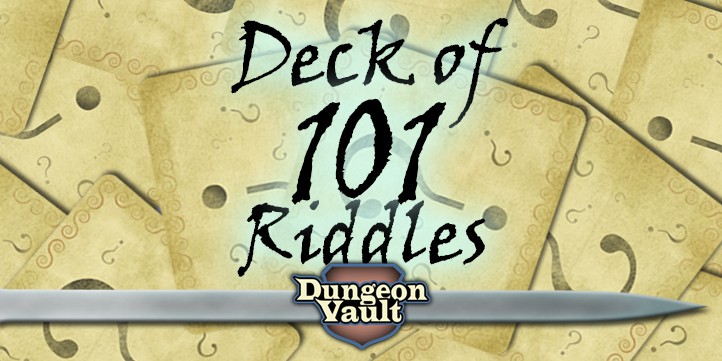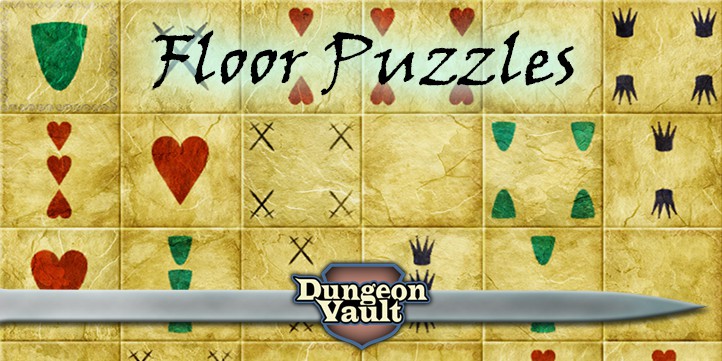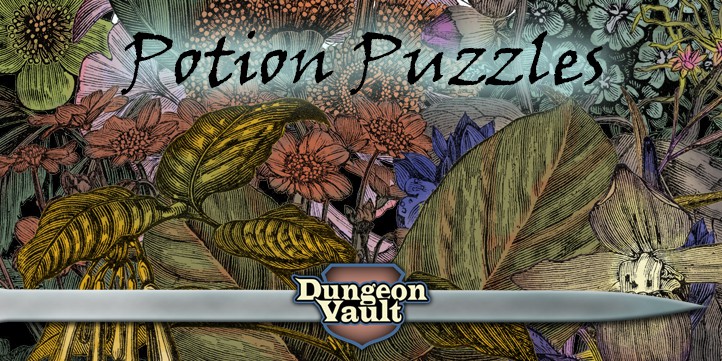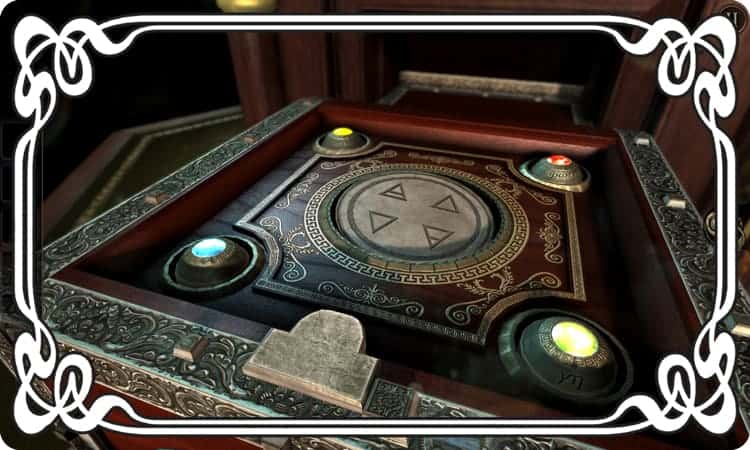
A puzzle room in D&D is a singular room that holds multiple puzzles which are all somehow interconnected. Solving one puzzle will lead to the clues needed to solve the next, until the last puzzle yields the big outcome players were searching for.
But creating a puzzle room for your D&D game isn’t easy. You don’t want puzzles to be too easy or difficult. There needs to be a natural progression to how your puzzles are interconnected, and you really don’t want your players to get stuck. So how DO you create a D&D puzzle room that actually works?
Fear not, with the right tools designing a super engaging puzzle room that will leave your players astonished and wanting more is a breeze. In this article I will show you how link and layer puzzles so you can start building your own D&D puzzle room today.
Updated on 25-10-2023 by Paul Camp
The Difference Between D&D Puzzle Rooms and Escape Rooms
Before we dive into creating puzzle rooms I want to take a short moment to talk about the difference between a puzzle room and an escape room.
“What is the difference between a puzzle room and an escape room?”
A puzzle room is often a part of a larger building. PCs can enter and leave the puzzle room freely whenever they wish and there is usually no time-limit to solving the puzzles. A library, a wizard’s study, or a botanical garden room, all make excellent D&D puzzle rooms. The benefit of puzzle rooms is that the PCs can leave whenever they want and maybe try a different route. That prevents them from being stuck in the puzzle room. Unless that’s what you want of course!
An escape room does have a time limit and locks the PCs inside. You can easily change your D&D puzzle room into an escape room by just adding those two elements. There are some real benefits to turning your puzzle room into an escape room:
Lock PCs inside
Locking PCs inside creates a sense of urgency, but it also helps keep all the puzzle pieces and clues inside as well. This is important because players will sometimes take puzzle pieces with them to the outside world, and even sell them without realizing they were needed for the puzzle room.
Set a time limit
Setting a time-limit also creates a sense of urgency, but if it isn’t done carefully, it can take the players away from the immersion in the game. My survey into D&D puzzles players enjoy most shows that 0 out of a 1.000+ players chose a timed puzzle as the type they liked best, while escape room puzzles fared a lot better. Players who have one hour in ‘real time’ will feel like they are out of the game. They like the escape room aspect but don’t want to lose immersion by a time limit.
To increase immersion you want to use real puzzle pieces players can manipulate and touch. Just like you would in an actual escape room. But those things – while very cool – cost a lot of money, and we are going to create a similar experience much cheaper.
Using real puzzle pieces creates immersion by blending the real world and the game world. Players will feel more like they are standing in the shoes of their characters. Another way to increase immersion is to create stakes for your D&D puzzle escape room that are important to the characters. If PCs have one hour to escape so they can save their loved ones from the clutches of an evil enemy, wanting to leave becomes more important to the character, thus increasing immersion.
It’s easy to change your D&D puzzle room into an escape room, but you certainly don’t have to. D&D puzzle rooms work fine on their own.
Finding the Right Puzzles for Your D&D Puzzle Room
Every puzzle room has four elements that you need to be mindful of. These elements are:
- A theme
- An introduction
- An outcome
- Stakes
The theme of your puzzle room could be anything you wish. But for this example, let’s use a library. The introduction is about the reason the PCs are there. Let’s say the library contains some information on a magical cure for mummy rot. The desired outcome is that the PCs find this cure to brew a potion. And the stakes are that they have all been infected.
Now that we have a structure for our puzzle room, we need some actual puzzles. The best puzzles for puzzle rooms should obviously fit the theme. But they must also be relatively quick and easy to solve. Players like the feeling of one solved puzzle leading to the next. You can’t create that feeling if they are only solving a single big puzzle.
It’s even better if your quick puzzles involve a lot of easy steps. Solving a lot of small steps in quick succession creates a feeling of flow that puzzlers like. And because players are solving steps at such a fast pace, they’ll still get that feeling of accomplishment, even if the steps themselves weren’t the most difficult. This will also go a long way toward preventing your players from getting stuck.
In short: You need a lot of different, quick, illustrated puzzles that each involve a lot steps. For this example I’m using several of the illustrated puzzles from my web store. These are:
Rune Puzzles. You can place these runes on anything object to lock it. But we’ll be placing them on books. Solve the rune puzzle and open the book, revealing the clues needed to solve other puzzles.
The Deck of 101 Riddles. There is a statue of a sphinx in the library. If players do get stuck, it will give them a riddle. Solve the riddle to get a clue.
Floor puzzles. In the middle of the library lies a mosaic. Players must find the missing tile and walk the pattern over the tiles to find the next clue.
Potion Puzzles. Find the rules to the recipe and the ingredients to brew a potion that will cure mummy rot.
I could have chosen different puzzles but these will work perfectly with the chosen theme. They already come illustrated and can be solved quickly with lots of steps to follow.
Layering Puzzles for Your D&D Puzzle Room
After selecting your puzzles, your still need to connect them so solving one puzzle will lead to uncovering the next. The easiest way to do that is by creating a linear pathway where solving puzzle one, leads to solving puzzle two, and so on. If you wish to use multiple rooms for layering read this article. (Especially the part about layering door puzzles will help you with your layout.)
Even if you wish to create a more complex non-linear setup later on, it’s good to start off layering your puzzles in a linear way. That way, you can always add more complexity later without being overwhelmed or losing track of all the required puzzle pieces and clues.
Most puzzles consist of two elements which I like to think of as the keys and the keyhole:
- The keys: Puzzle pieces and clues.
- The keyhole: Puzzle board that ‘unlocks’ the outcome if the keys are used correctly.
Players must first locate all the ‘keys’ before they can use them to unlock the keyhole. For example:
“Doerak the barbarian, Stickyfingers the rogue, and Laudius the wizard enter a library (the D&D puzzle room) in search for a cure for mummy rot. They quickly find a book titled ‘Mummy rot through the ages’ a promising title. But alas! The book has been locked with a rune lock (the keyhole) which looks like this.
Laudius orders everyone to study the runes and spread out in the hopes of finding clues (keys) to their meaning. Stickyfingers finds a note that translates a rune word where some characters are identical to the rune lock (keyhole). And Doerak finds a clue in ‘Runecasting, an introduction’ which looks like this.
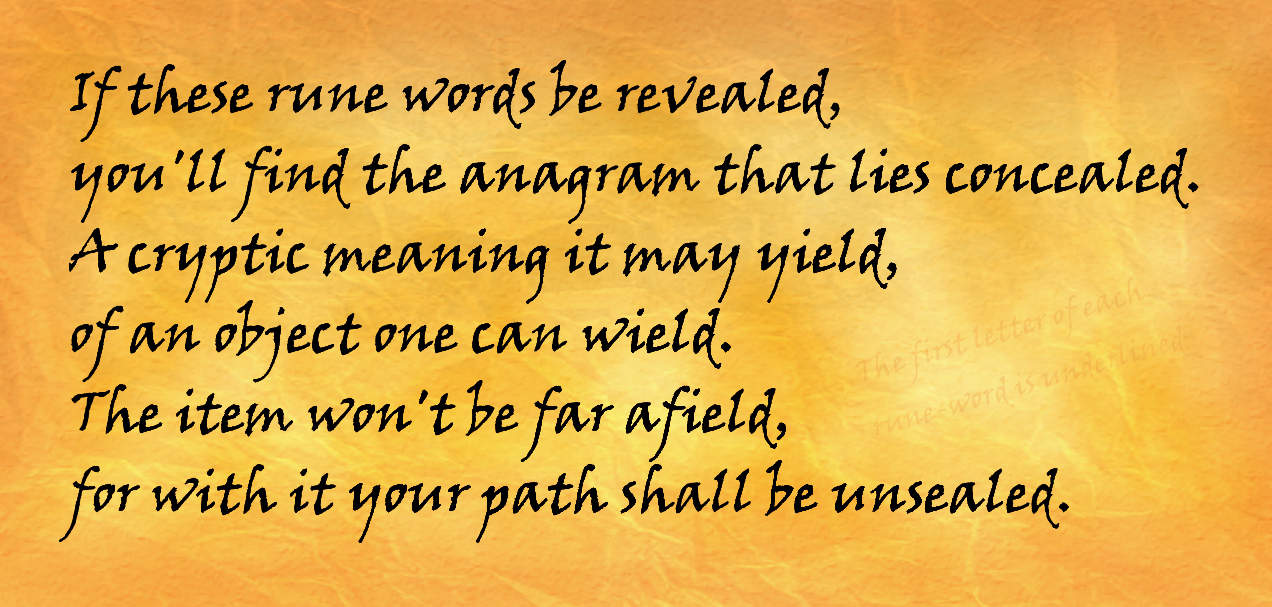
After collecting all the clues, Laudius solves the rune puzzle and unlocks ‘Mummy rot through the ages’. In it, he finds more translations to runes, which might help him solve different rune locks. But he also finds two lines to the recipe for curing mummy rot.”
The lines of the recipe are keys to solving the potion puzzle. If they manage to collect all the ingredients and pieces of the recipe, and place them in a cauldron in the right order (keyhole) they will have solved that puzzle and found the cure. Not surprisingly, brewing the potion should be the last step to this D&D room puzzle.
This is just one example of how solving one puzzle can lead to the clues needed to solve the next. What you want to do is create a linear pathway for your D&D puzzle room:
“The book ‘Mummy rot through the ages’ also contained crucial key pieces to solving another rune lock. And it isn’t long before Stickyfingers finds a book called ‘Floor waxing, wax on wax off’ (keyhole) which is locked by a rune lock and wedged into a bookcase. Using the new clues (keys) they unlock the runes and the book turns out to be a lever. Pulling it turns the book case revealing a secret compartment where players find the missing tile in the floor puzzle (key). They place the floor piece into the floor puzzle (keyhole) and now have all the necessary pieces to solve this puzzle.”
As you may have noticed, the secret compartments and books can all be thought of as smaller areas within the larger room that can be unlocked through solving a puzzle (keyhole). And each smaller area contains the clues and puzzle pieces (keys) for solving the next puzzle. You can dress these areas up to look like books, secret compartments, music boxes that open, scrolls and so on. But essentially, they are all closed off areas that hold keys for the next keyhole.
To create a series of puzzles I suggest following these steps:
Step 1. Define areas in your D&D puzzle room
The first step is to define a number of areas in your puzzle room equal to the number of puzzles you want to use.
Step 2. Define the order of exploration
Next, define in which order you want PCs to be able to unlock each area. Obviously, the room PCs enter should contain all the keys and the keyhole for the first puzzle. Lay out areas in a linear way first where solving one puzzle will yield the keys to solving the next.
Step 3. Add complexity
You can add complexity by having one area yield the keys to not one but two different puzzles. Or you could start off with multiple puzzles to solve that together yield the keys to the final puzzle. Adding complexity is very easy once you’ve practiced creating a linear setup for your D&D puzzle room first.
Always Have a Backup Plan for Your D&D Puzzle Room

In escape rooms players can ask for hints if they get stuck. Sometimes those hints come at a price, like losing time. But often the players simply receive the clues if they fall behind too much. Instead of just giving players the clues, I like to create at least some type of challenge. In this case, I’ll use a statue of a sphinx which challenges the players to a riddle in exchange for helping them get unstuck. With the deck of 101 riddles there are plenty of riddles to choose from so you can always give players a new riddle if they aren’t able to solve it.

By Paul Camp
Image credit: The Room PC game
